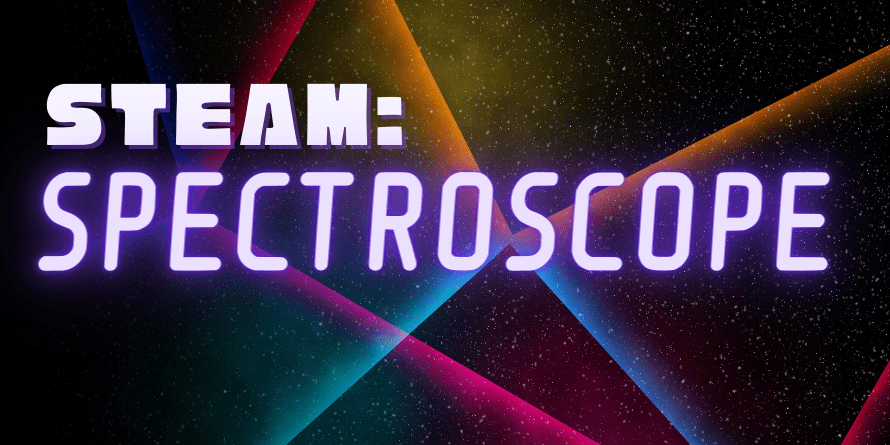
Are you curious about light? Do you like rainbows? Do you love making fun crafts, especially if it demonstrates something cool and scientific? All of the above? Try this DIY science project to learn about spectroscopes.
A spectroscope is a scientific instrument that splits light into different wavelengths, which our eyes see as different colors of the rainbow. Here’s how you can make your own!
Materials
- Empty paper towel roll
- Craft knife and/or scissors
- Blank or old CD
- Pencil
- Small piece of cardboard or cardstock
- Tape
- Paint, markers, crayons, or anything else to color your spectroscope (optional)
Instructions
- If you will be painting or coloring your spectroscope, you’ll want to do that first. It’s optional—but also totally fun—so why not?

- Have an adult use a craft knife to cut a thin slit at a 45-degree angle near one end of the tube.
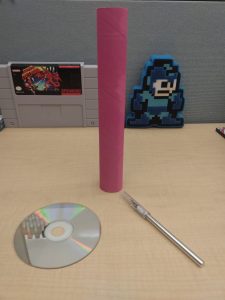
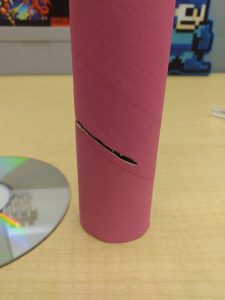
- Have your adult cut a small viewing window directly opposite from the midpoint of the slit.
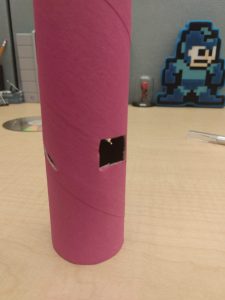
- Trace one end of your tube onto your cardboard or cardstock, and cut out that circle with scissors.

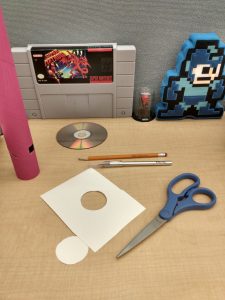
- Cut a straight slit across the center of your cardboard circle, but not all the way to the edge. Tape the circle with the slit in it to the opposite end of your tube from the angled slit and viewing window. This will be the top of your spectroscope. Insert the CD, shiny side up, into the 45-degree angled slit.
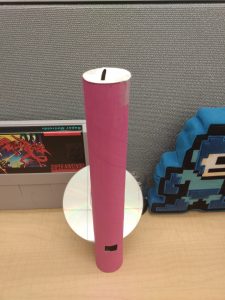
How to Use Your Spectroscope
Take it outside and point the top up at the sky (but never directly at the sun) and look through the viewing window. You will see a rainbow inside! Now try it with other light sources, such as fluorescent or LED lights, neon lights, candles, etc. Compare and contrast what you see.
If you don’t see a rainbow, your CD slit might be at the wrong angle. Try tilting the tube, or adjusting the angle of the slit.
What’s Happening?
The light we can see coming in from the top of the tube is sometimes called “white light”, which is a blend of all the different colors of light our eyes can see. Mixed together evenly this way, it looks to us like it has no color at all.
CDs are reflective, which is how the light reaches your eye. They also have tiny tracks or pits, all spaced out evenly, on their reflective surface that the computer or CD player uses to read the CD. The tiny ridges cause the light to reflect in slightly different directions depending on their wavelength (a fancy word that refers to a property of light, and also determines the color we see when our eyes absorb that light). Each wavelength bounces off the CD at slightly different angles, which means instead of seeing a blended together “white light", we see all the visible colors separated into a rainbow.
This demonstrates a process called “diffraction”. There are other ways to diffract light and they all make the colors separate, so scientists can use it to determine what colors of light are present. This can tell them useful things about the source of the light. For example, carefully diffracting the light from distant stars can tell astronomers what those stars are made of and even how old they are, all based on how much of each color shows up.
You might notice that other light sources you point your spectroscope at produce different, or possibly incomplete, rainbows. This is because other light sources produce light differently from how the sun does, which is also why the same person or object can look different in sunlight than when lit by lightbulbs or candles.



Add a comment to: STEAM: Spectroscope